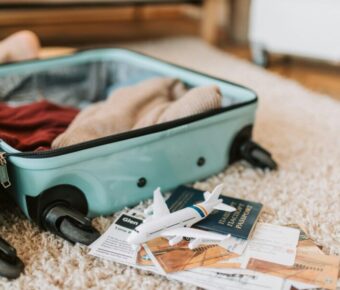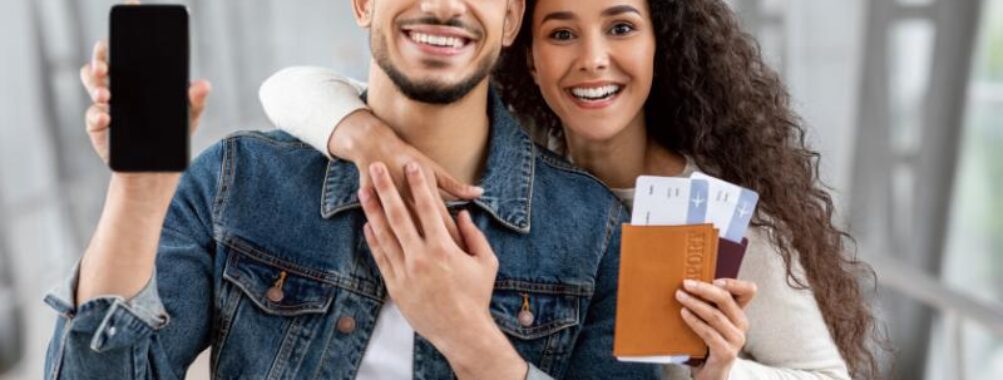
Ultimate Travel Visa Guide: Essential Tips for Global Explorers
Navigating the world of travel visas can seem tricky, but with the right information, it’s easier than you think. Whether you’re planning a vacation, a business trip, or an extended stay abroad, understanding the different types of visas and their requirements can save you time and stress.
Many countries have visa waiver agreements, allowing travelers from specific countries to enter visa-free for short periods. However, not everyone is so lucky, and obtaining the correct visa is essential to avoid issues at the border.
Different types of travel visas cater to various needs, such as tourist, business, and student visas. Each category has its own set of requirements and limitations, so it’s important to choose the right one for your journey.
For instance, a typical visitor visa might cover a short holiday or a family visit, while a business visa could be necessary for attending meetings or conferences. Obtaining a visa usually involves paperwork, interviews, and specific documentation, including a valid passport, proof of accommodation, and sometimes financial statements.
The visa application process can also vary significantly by country. Some countries have streamlined online applications, while others require in-person appointments at consulates or embassies. Knowing what documents you need and how to apply correctly can increase your chances of approval and prevent unexpected delays. From preparing for visa interviews to understanding the reasons for potential denials, being well-prepared can make a world of difference in your travel plans.
Table of Contents
- Key Takeaways
- Types of Travel Visas
- Visa Requirements by Country/Region
- Canada
- Australia
- Europe
- Japan
- Mexico
- Brazil
- Russia
- China
- United States
- India
- Step-by-Step Visa Application Process
- Documents Needed for Visa Application
- Common Reasons for Visa Denial
- Visa Interview Tips and Preparation
- Expedited Visa Processing Services
- What Are Expedited Visa Services?
- Popular Expedited Visa Services
- Application Process
- Who Qualifies?
- Speed and Cost
- Extending or Renewing Your Travel Visa
- Frequently Asked Questions
- What are the requirements for obtaining a tourist visa for the USA?
- How can I find out the travel visa requirements for all countries?
- How to apply for a U.S. visitor visa online?
- What steps are involved in scheduling a U.S. visa appointment?
- Book Your Dream Experience
- More Travel Guides
Key Takeaways
- Different visa types cater to various travel purposes.
- Having the correct documents is crucial for a smooth application process.
- Understanding application requirements by country helps avoid delays.
Types of Travel Visas
Travel visas come in various forms, each tailored for specific purposes. Here’s a brief overview of the main types:
1. Tourist Visa
Aimed at those traveling for leisure or sightseeing. Tourist visas typically last for a short period, often up to three months. They don’t allow you to work or engage in business activities.
2. Business Visa
This visa is for those attending conferences or meetings. It’s important to note that business visas do not permit full-time employment. They’re usually valid for a few months, depending on the country.
3. Work Visa
For individuals planning to take up employment in a foreign country. Work visas often require a job offer or sponsorship from a company in the host country. They can be long-term, lasting from a year to several years.
4. Student Visa
Ideal for those pursuing education abroad. Student visas typically last for the duration of the academic program. Some countries might allow limited work hours under this visa.
5. Visitor Visa
This type is for those visiting family or friends. Visitor visas are short-term and don’t allow for study or work.
6. Transit Visa
Meant for travelers passing through a country on their way to another destination. Transit visas are usually valid for a few days. They are not suitable for extended stays.
7. E-Visa
Electronic visas or e-visas are applied for and granted online. They simplify the process but come with specific rules and restrictions. Not all countries offer e-visas.
Understanding these types can make your travel planning smoother. Each visa type has unique requirements and purposes, so choose the one that fits your needs.
Visa Requirements by Country/Region

Travelers need to know their destination’s visa requirements to avoid surprises. Understanding specific requirements for each country can help smooth out international travel plans.
Canada
For most tourists, Canada offers a straightforward visa process. U.S. citizens do not need a visa for short visits. However, before entering, they must carry a valid passport. Other nationals may need a visitor visa or an eTA (Electronic Travel Authorization). Required documents include a passport valid for six months and sometimes proof of funds for the stay.
Australia
Australia is welcoming but strict about visa requirements. U.S. and EU citizens need an eVisitor (subclass 651) or ETA (subclass 601). The eVisitor is free and allows for multiple entries within 12 months. Applicants need a valid passport, a filled-out online form, and sometimes proof of economic means and health insurance.
Europe
Europe’s visa demands vary greatly. For most travelers aiming to visit Schengen Zone countries such as France, Germany, and Italy, a Schengen visa offers entry for up to 90 days in any 180 days. Visitors must apply with several documents: passport, travel insurance, proof of funds, and a return ticket. Nationals from certain countries, like the U.S., can travel visa-free for short stays.
Japan
Japan’s visa policy is quite organized and traveler-friendly. Nationals from 68 countries, including the U.S. and EU countries, can enter visa-free for 90 days. For others, a tourist visa is necessary. Required documents include a passport, a completed visa application form, a recent photo, and proof of financial stability. Sometimes an invitation letter is needed.
Mexico
Mexico greets tourists warmly and generally has liberal visa policies. U.S. and Canadian citizens can enter without a visa for up to 180 days as tourists. They only need a valid passport. Other nationals might need a visa or the FMM (Forma Migratoria Múltiple). Required items for application include a valid passport, a completed application form, and proof of economic status.
Brazil
Brazil requires a visa for many nationalities, though U.S., Australian, and Canadian passport holders can apply online for an eVisa. Travelers must ensure their passport has a validity of at least six months. Required documents include a passport, a filled application form, a recent photograph, and proof of travel plans, like a return ticket.
Russia
Russia’s visa process can be intricate. Almost all travelers, including U.S. and EU citizens, need a visa. A tourist visa can be issued for up to 30 days. Essential documents are a tourist invitation letter, a hotel booking, a passport, and a visa application form. It may be necessary to register the visa at a local consulate or through the lodging establishment on arrival.
China
China enforces strict visa protocols. Most visitors, including those from the U.S. and EU, need a visa. A tourist visa (L visa) process requires a passport valid for six months, an application form, recent photos, and proof of travel arrangements. Sometimes, a financial proof and an invitation letter or hotel booking confirmation might be needed.
United States
Travel to the U.S. generally requires a visa unless the traveler is from Visa Waiver Program (VWP) countries, in which case an ESTA (Electronic System for Travel Authorization) applies. Non-VWP nationals need a tourist visa (B-2). Required submissions include a passport, visa application form (DS-160), travel itinerary, and sometimes an interview at a consulate.
India
India attracts numerous tourists and has a relatively simple visa process. Travelers from many nations, including the U.S. and EU, can apply for an e-Visa. Required documents include a passport with six months validity, a recent photograph, and sometimes proof of booked travel and accommodation. For longer stays or multiple entries, a standard tourist visa is needed.
See Related: Visa Interview Tips: A Comprehensive Guide for Success
Step-by-Step Visa Application Process

Applying for a visa can feel like a maze, but breaking it down into simple steps makes it easier. Here’s a clear guide to help you navigate the process.
First, decide on the type of visa you need. Different visas serve different purposes, such as tourist, student, or work visas.
1. Gather Required Documents:
- Passport: Must be valid for at least six months.
- Photographs: Passport-sized, matching the visa requirements.
- Application Form: Complete the specific form needed, like DS-160 for non-immigrant U.S. visas.
- Financial Documents: Show proof of funds to support your stay.
- Support Documents: Letter of invitation, itinerary, or any other relevant documents.
2. Complete the Visa Application Form:
You typically need to fill out the application form online. For U.S. visas, you use Form DS-160. Ensure all information is accurate and matches your documents.
3. Pay the Application Fee:
Fees vary depending on the type of visa and the country. Payment methods may include credit card, bank transfer, or cash at designated centers.
4. Schedule an Appointment:
Book an appointment at the nearest embassy or consulate. They might have long wait times, so plan ahead.
5. Biometrics and Interview:
Attend your scheduled appointment. You might need to submit your fingerprints and pass an interview. Usually, interviews are short but require honesty and clarity.
6. Wait for Processing:
Visa processing times vary. Some might take a few days, others weeks or even months. Patience is key here.
7. Collect Your Visa:
Once approved, you’ll be notified to collect your visa. Once you receive it, make sure to double-check all details.
Documents Needed for Visa Application

Applying for a travel visa can seem complicated, but having your documents ready makes it smoother. You’ll often start with the application form. For nonimmigrant visas to the U.S., you’d use the DS-160 form, which you can fill out online.
Next, you’ll need a valid passport. Ensure it’s valid for at least six months beyond your planned stay. This rule varies, so always double-check specifics for your destination.
A recent photograph is typically required. The photo must meet government standards, such as size and background color. If unsure, get it taken at a professional photo service to avoid issues.
Here’s a quick rundown of general documents:
- Passport: Valid for at least six months beyond your stay.
- Photo: Recent, meeting specified standards.
- Visa application form: Like DS-160 for the U.S.
- Visa fee receipt: Proof of payment for the visa application fee.
- Proof of travel plans: Flight bookings or itinerary.
- Proof of financial means: Bank statements or pay stubs.
- Invitation letter: If visiting someone abroad.
- Supporting documents: Depending on the visa type, could include employment proof or academic records.
If you’ve traveled before, expired passports showing past travels can be helpful, too. Each visa type has unique requirements, so always look up specifics.
Don’t forget, each applying must submit their documents, even kids. This process can be meticulous, but having everything in order is worth it. Safe travels!
Read Also: American Visa for Bangladeshi Citizens: Application Guide and Requirements
Common Reasons for Visa Denial
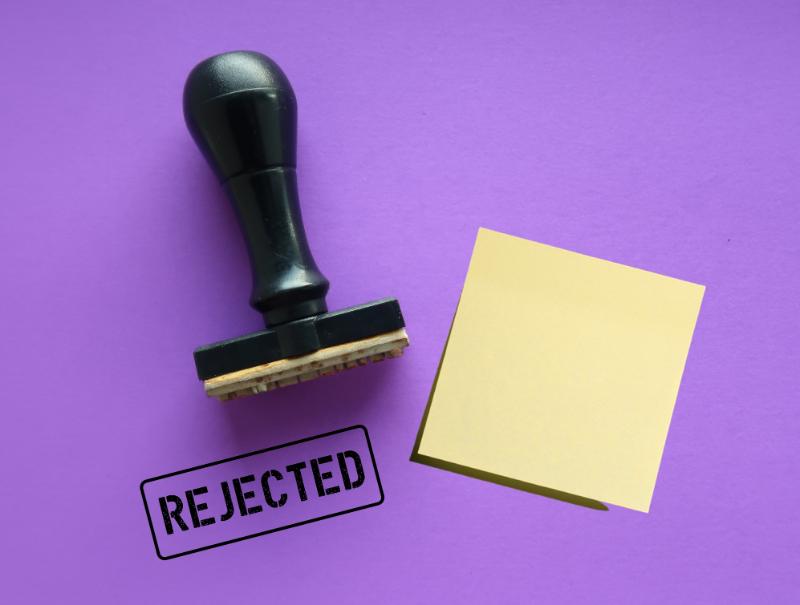
There are numerous reasons why a travel visa application can be denied. One of the most common reasons is missing or incomplete documentation. If an applicant fails to provide all required documents or leaves sections of the application incomplete, the visa may be denied.
Insufficient funds is another major factor. Travelers need to show they have enough money to support themselves during their stay. Without proof of adequate financial resources, the consulate may reject the application.
Criminal history can also lead to visa denial. Past criminal conduct, no matter when it happened, might disqualify an applicant from receiving a visa, depending on the severity of the crime.
Some applicants lack strong ties to their home country. Consular officers look for ties, like family, job, or property, that can assure them the applicant will return after their trip. The application might be denied without these ties due to fears of illegal immigration.
Errors on the visa application form can cause problems too. Simple mistakes, like incorrect spellings or dates, might lead to a rejection. Double-checking information before submission is crucial.
Health concerns can be another barrier. If an applicant has a health condition that poses a public health risk or requires extensive medical treatment, their visa might be denied.
Additionally, failing to comply with visa procedures and requirements can lead to denial. This includes not following instructions, missing interviews, or not preparing needed documents.
In some cases, an applicant’s travel history or past immigration issues might affect their current application. Previous visa overstays or violations can raise red flags.
Lack of clarity on the purpose of the visit is another issue. Consular officers need clear and legitimate reasons for travel. If the purpose is vague or suspicious, they may deny the visa.
Visa Interview Tips and Preparation
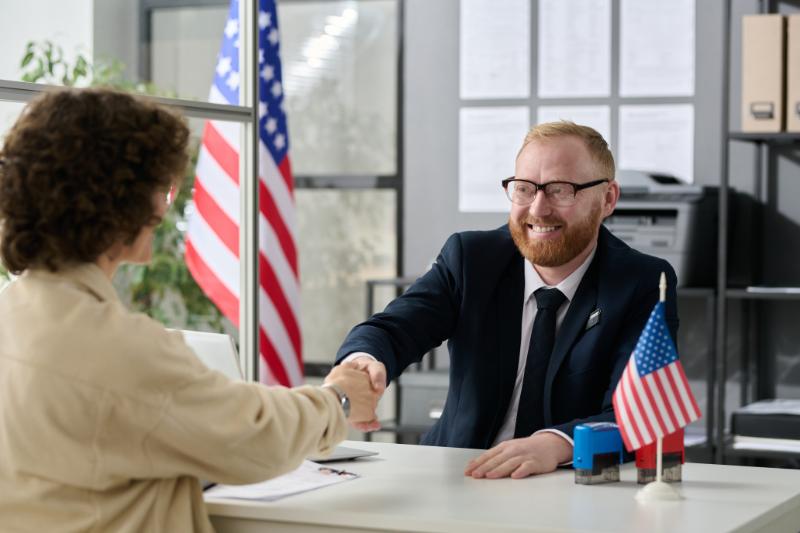
Preparing for a visa interview can feel a bit daunting, especially if it’s your first time. Here are some practical tips to help you get ready and boost your confidence.
First, gather all required documents. This includes your passport, visa application, appointment confirmation, and any supporting documents like bank statements or a letter of invitation. Make a checklist to ensure nothing is forgotten.
Next, practice common interview questions. Typical questions might include:
- Why do you want to visit?
- How long will you stay?
- Do you have family or friends in the destination country?
Be honest in your answers and provide clear, concise responses.
It’s crucial to show ties to your home country. This means demonstrating reasons you will return home, such as a job, family, or property. This helps prove you don’t intend to overstay your visa.
When it’s time for your interview, dress appropriately. This doesn’t mean you need to wear a suit, but aim for clean and neat attire. First impressions matter.
Be punctual for your interview. Arriving on time shows respect and organization. If you miss your appointment, it might be challenging to reschedule.
During the interview, stay calm and be polite. It’s normal to feel nervous, but try to maintain a friendly demeanor. Remember, the consular officer wants to understand your intentions and ensure you meet the visa requirements.
Lastly, don’t forget to visit the official embassy or consulate website for any specific instructions related to your appointment. This can provide additional guidance and help you avoid any last-minute surprises.
Expedited Visa Processing Services
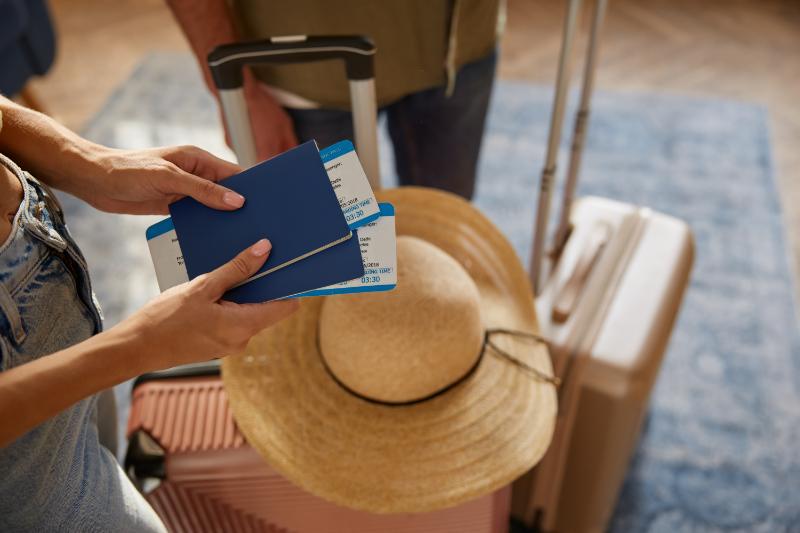
Got a last-minute trip planned? Expedited visa processing services can save the day.
What Are Expedited Visa Services?
These services help you get your visa faster than the standard process. Whether it’s for a sudden business trip, family emergency, or an unplanned vacation, they can speed things up.
Popular Expedited Visa Services
Some well-known services in the U.S. include:
- VisaHQ
- TravelVisaPro
- PassportVisasExpress
- TraVisa
- TDS (Travel Document Systems)
Application Process
To expedite your visa, you’ll need:
- Complete Standard Application: Start by filling out the regular visa form for your destination country.
- Schedule an Appointment: Book the earliest available slot.
- Prepare Required Documents: Passport, photos, travel itinerary, and any additional paperwork requested.
- Submit: Either directly at the consulate or through an expediter service.
Who Qualifies?
Not everyone can get their visa expedited. You need a compelling reason like:
- Urgent travel
- Medical emergencies
- Last-minute business trips
- Unforeseen personal issues
Speed and Cost
Expedited services aren’t cheap. Pricing varies based on urgency and destination. Some embassies may offer faster appointments for an additional fee. Private expediters might charge even more, but they handle the nitty-gritty details.
Getting a visa quickly means less stress and more time to focus on your travel plans. Make sure you have all your documents in order to avoid delays.
See Related: Schengen Visa Information for Bangladeshis: Essential Application Guide
Extending or Renewing Your Travel Visa

Travelers often need to extend or renew their travel visas when their stay exceeds the initial duration allowed. This process involves submitting an application to the U.S. Citizenship and Immigration Services (USCIS).
To start, fill out Form I-539, the Application to Extend/Change Nonimmigrant Status. Ensure it’s accurate and complete. Mistakes can delay the process.
Documents Needed:
- A clear photocopy of your passport bio-data page.
- A copy of your current visa and any U.S. entry stamps.
- Proof of payment for the Form I-539 fee.
You should send your application at least 45 days before your authorized stay expires. This gives enough time for processing and helps avoid complicated situations.
Important Tips:
- Always check the expiry date on your Form I-94.
- Make sure your passport stays valid throughout your extended stay.
- Provide a valid reason for the extension, like a health issue or an unexpected event that delays your plans.
If your visa gets rejected, check the status and reasons so you can address any issues before reapplying. Staying informed and organized greatly increases the chances of approval.
Frequently Asked Questions
Getting a travel visa can be tricky. Below are answers to common questions about how to get a tourist visa for the USA and other countries.
What are the requirements for obtaining a tourist visa for the USA?
To obtain a U.S. tourist visa, you need to fill out the DS-160 form, pay the visa fee, schedule and attend an interview, and provide a passport, photo, and travel itinerary. Make sure your passport is valid for at least six months beyond your stay in the U.S.
How can I find out the travel visa requirements for all countries?
Travel visa requirements vary by country. A good resource to check is the official embassy or consulate website of the country you want to visit. You can also use travel advisory websites or consult your local government’s travel guidance.
How to apply for a U.S. visitor visa online?
Start by filling out the DS-160 form online. After completing the form, you need to pay the application fee and print the receipt. Next, schedule an appointment at the nearest U.S. embassy or consulate. You’ll also need to upload a photo that meets specific requirements.
What steps are involved in scheduling a U.S. visa appointment?
After completing your DS-160 form and fee payment, visit the U.S. visa appointment website. Create an account, then select your appointment date and location. You need to enter your visa application number and payment receipt details to confirm the appointment.

